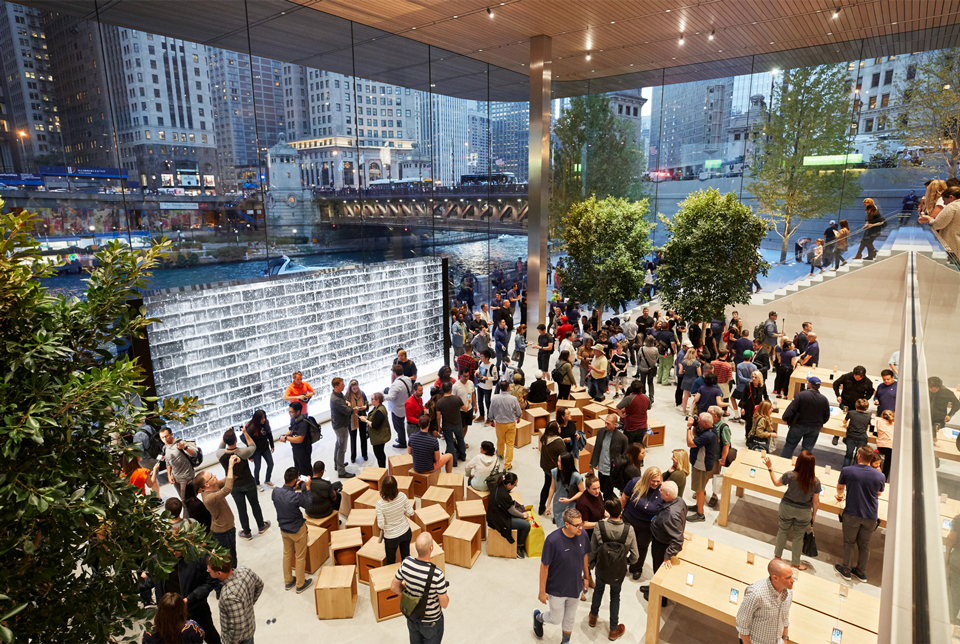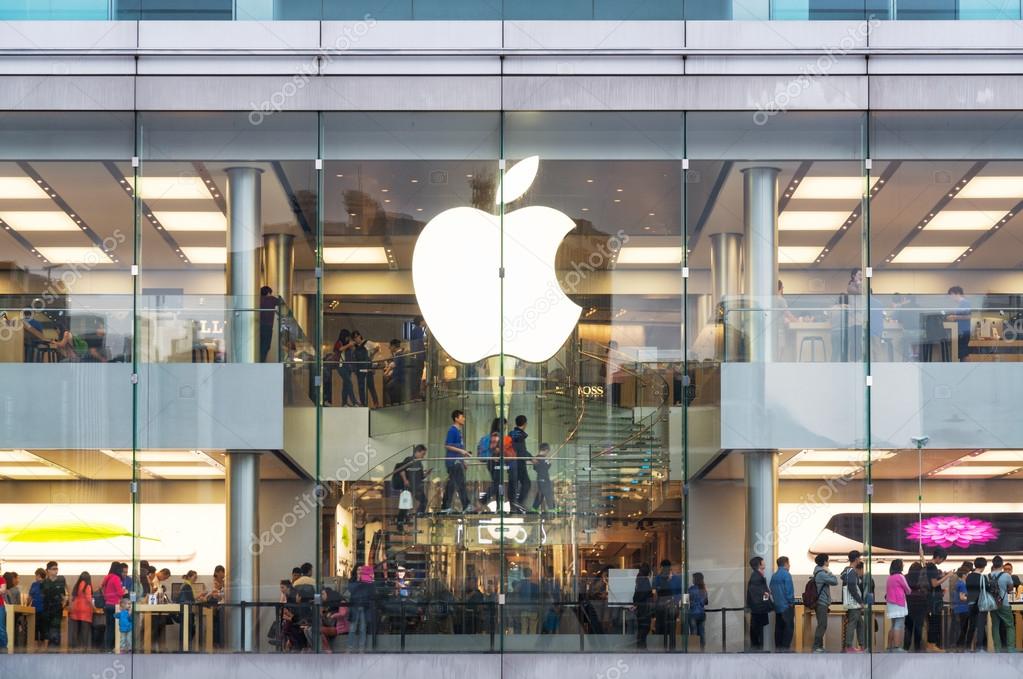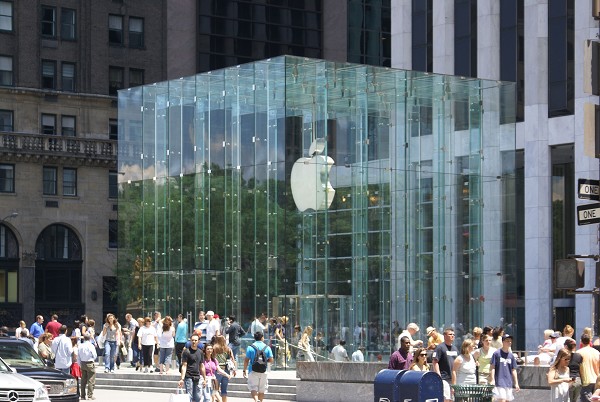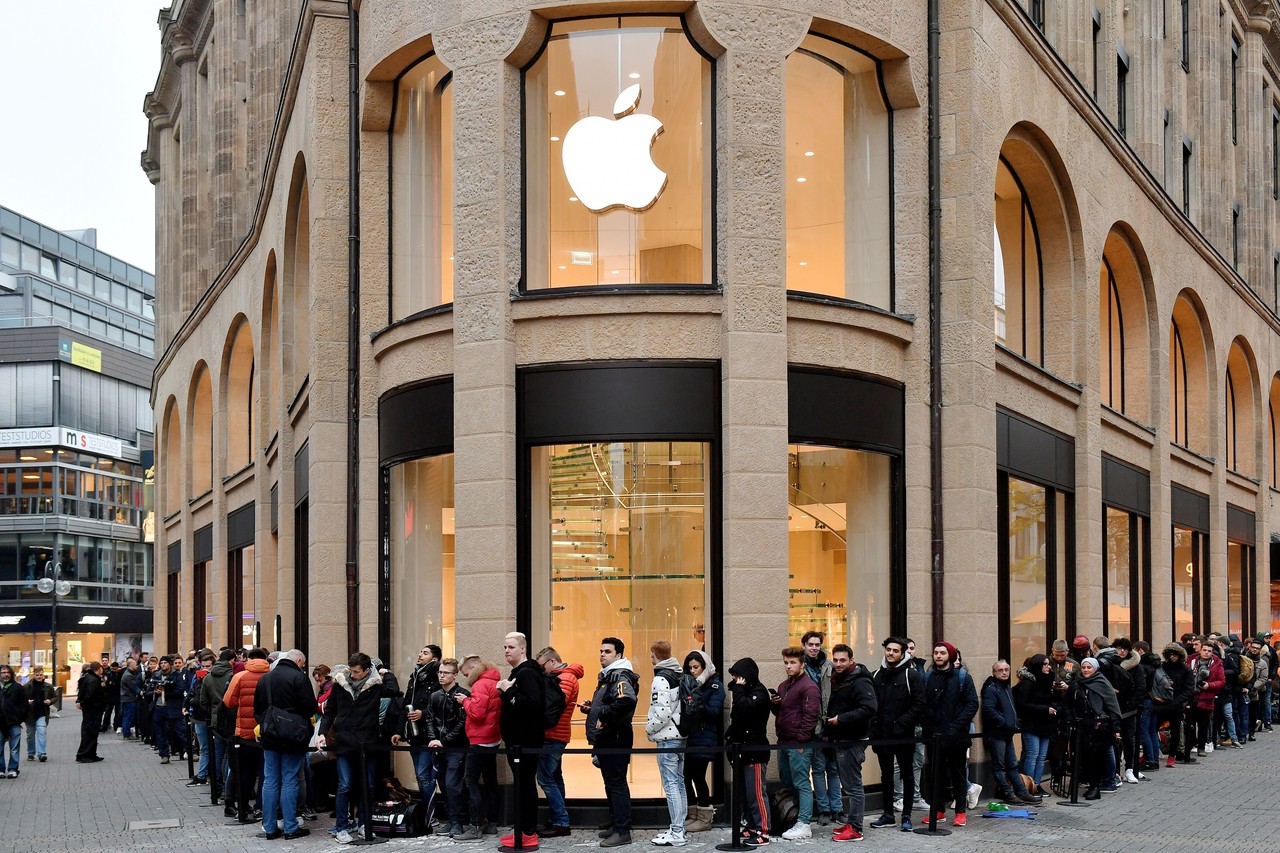This isn’t going to be a fanboy anthem to Apple. And it’s not going to be a snarky rant about Microsoft’s failed retail efforts. It’s going to be a look at what Apple is doing right. That’s nowhere more apparent than in their approach to retailing and customer interaction.
Apple retail spaces (they’ve dropped the word ‘store’ and refer to flagship locations as ‘town squares’) reached $1 billion sales faster than any retailer in history. Just two years later (in 2006) they moved $1 billion in products in a quarter. Ten years later, in the last quarter of 2016, they booked $47 billion. For the first fiscal quarter of 2018 they posted revenues of $88.3 billion although they no longer split out retail sales.
While we’re on the topic of quarters, twice as many people—over 100 million—visit Apple stores in a quarter than visit Disney’s four largest theme parks in a year. And those people weren’t window shopping. Apple stores’ sales per square foot are twice those of jeweler Tiffany & Co. and over six times those of electronics retailer Best Buy, according to a Wall Street Journal estimate. Apple earns an average of $58 per visitor.
Why?

When my wife’s iPhone began acting up, a trip to an Apple store on Black Friday wasn’t something she looked forward to. “I’m going over that way anyhow,” she said. “I might as well brave it.” A few minutes later she called laughing. “Listen to this, it’s like there’s a party going on here!”
That’s nice, I thought, but that’s sure going to make it harder to get her phone fixed.
I was wrong.
Her phone problem was solved without a wait in spite of the fact that this was the one day a year Apple has a sale. We learned later that Apple stores did four times more business than usual that Friday. Yet the appointment was on time, diagnostics showed the year-old battery was acting up, and they cheerfully replaced the phone on the spot. All in a matter of minutes.
Appointment? Replaced? Cheerfully? In a retail store?
“The amazing thing,” she said, “was that people were thanking the Apple employees for selling them stuff. I’ve never seen such a thing. It was an experience!” By all accounts, that was pretty much what went on in the 500 Apple locations around the globe.
So what is Apple doing right?

Philosophy
Apple products, it seems, can almost sell themselves, but the company is still spending millions to make sure a visit to an Apple store is a positive experience.
The focus is on problem-solving, not sales. Employees are not on commission and don’t have a quota. Their job is to fix you if you have a broken iPhone or iPad.
But that’s not enough. You won’t be ignored, or worse as far as I’m concerned, get a slack-jawed mechanical welcome. Apple employees are drilled in the importance of a warm welcome and fond farewell, to listen and probe politely, so as to understand what you need and to think positively.
Hiring
If acceptance rate is the standard, it’s twice as hard to get hired by Apple than it is to get into Stanford University. A few years ago Apple hired less than six percent of the people who applied for a job. Stanford accepted 13 percent the same year.
But that doesn’t mean they’re after a certain look. What they want is the right attitude. Tattoos and piercings are okay as long as you have, as Apple puts it, “a passion for what we do and how we do it.”
Think about it. In many retail environments, they just hope for punctuality and proper hygiene.

Training
Owning and using Apple products is a good start, but that’s not enough if you’re an Apple Genius. You have to be certified annually on Apple operating systems and hardware—and that’s in addition to training in retail philosophy, basic sales techniques, customer relations, an in-depth understanding of the AppleCare program, and a thorough introduction to the behind-the-scenes systems such as the EasyPay self-checkout program.
With low employee turnover, the company can afford to invest heavily in training—something that doesn’t make sense in most retail segments where 100 percent turnover earns bragging rights.
Design
Built initially as a defensive strategy, Apple built showrooms inside big-box retail stores to make the brand more visible. But it quickly became obvious that Apple couldn’t control the experience. Customers were exposed to TSA-like shakedowns at exits along with the other big-box customers. For Apple, that was unacceptable.
They opened their own stores only after prototypes had been built in a warehouse, expertise was brought in from admirable retailers such as Gap, and lots of other “how can we make this fabulous” vetting. Today, mall owners are debating whether they should consider giving Apple stores anchor status displacing the Nordstroms of the world. After all, Apple stores have been shown to increase overall sales in shopping malls by 10%. In some malls, Apple accounts for 33% of overall sales.
But the stores have almost become malls themselves. The Grand Central Terminal space in New York City takes up more than 23,000 square feet and cost Apple a million dollars a year in rent—something they’re happy to pay to gain access to the over a million people a day who pass through the station.

Live and learn
The former head of Apple’s retail operations, Ron Johnson, said:
“Think about this: Any store has to provide products people want to buy. That’s a given. But if Apple products were the key to the stores’ success, how do you explain the fact that people flock to the stores to buy Apple products at full price when Wal-Mart, Best Buy and Target carry most of them, often discounted in various ways, and Amazon carries them all—and doesn’t charge sales tax!”
The moral of this story, to paraphrase Johnson, isn’t figuring out how to make more money with a store; it’s figuring out how to reinvent retail interactions to enrich customers’ lives. It’s about the experience.




Leave a Reply